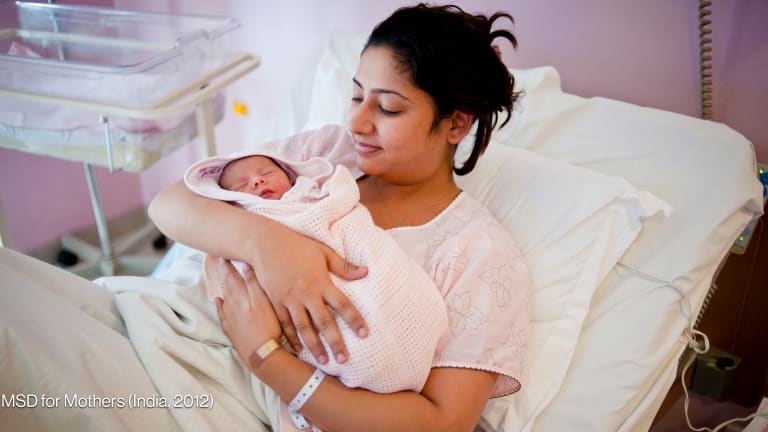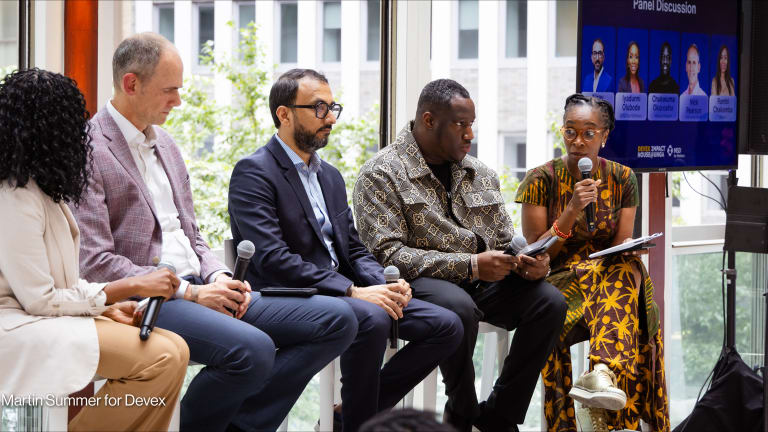
We live in a world where, every day, 830 women, 15,000 children under 5, and 3,000 adolescents die from causes that are preventable. This should be reason enough for us to realize that our task as policymakers and health experts is not yet done. The fact that 1 in every 5 women lacks access to a skilled health professional during childbirth tells us that business as usual will not work anymore.
Around 5.6 million children under 5 died in 2016. Most of these deaths were caused by preventable diseases. We must reflect on whether our interventions can be more impactful.
“Stakeholders still operate in silos, which act as the biggest barrier to scaling up efforts.”
—Young women and girls are still subjected to a range of harmful practices and violence, including early marriage. Every year, an estimated 12 million girls get married before the age of 18. We must examine how we can bring about a societal change that empowers women.
The widespread health inequality that disproportionately affects women, children, and adolescents in remote areas, communities affected by poverty, patriarchal cultures, and humanitarian settings screams loud and clear that the status quo needs to be broken.
We have the knowledge and the opportunity to end preventable deaths among all women, children, and adolescents. We have the means to greatly improve their health and well-being and shape a more prosperous and sustainable future.
Why, then, are we still faced with distressing figures on women, children, and adolescent health?
A critical reason is the lack of effective multisectoral collaboration. Stakeholders still operate in silos, which act as the biggest barrier to scaling up efforts. It is incumbent upon us to break the barriers that have been obstructing global health equity. The British Medical Journal has identified 12 country-specific success factors from the Millennium Development Goals era. These include health issues that both high-income and low- and middle-income countries battled with and successfully overcame.
The most important lesson from these successes is that multisectoral collaboration is relevant globally irrespective of geographies, or economic, social, cultural, and historical contexts. It is important to note that the modalities that proved to be effective were remarkably similar across settings. It is, indeed, encouraging to know that there is a vast knowledge base to share on what works in multisectoral collaboration.
These success factors also highlight the dynamic and evolving nature of multisectoral collaboration. Our 10 constituencies in the Partnership for Maternal, Newborn & Child Health, each has a critical role to play. They are partner countries; donors and foundations; intergovernmental organizations; NGOs; academic, research, and training institutions; adolescents and youth; health care professional associations; private sector partners; U.N. agencies; and global financing mechanisms. They can all do a lot on their own, but they can do much more together.
We also require smart partnerships that leverage complementary strategies and deliver the changes we need to see. Stakeholders and their engagements shift across different components and periods, highlighting the importance of realistic time frames, diverse evidence, and ideas. It is equally important to be dynamic and learn and adapt while working to yield transformative results.
We have ample evidence that focusing on solutions to improve the health and well-being of women, children, and adolescents is one of the greatest investments we can make, contributing to not only social development but also economic growth. My three decades of experience working in public health, often in developing countries, has convinced me of this.
We need to mobilize more resources and be smarter in our use of existing resources. In addition to providing financial, technical, and human resources to strengthen health systems, we must develop infrastructure in other areas to improve health outcomes.
Interventions targeting improved nutrition, education, water, clean air, and sanitation need to be prioritized. The global north can invest its technical prowess and risk-capital in health innovations that are being developed in and for LMICs. Governments could maintain a leading role in adopting successful innovations and taking them to scale through their public programs.
How hard to reach are the 'hard to reach'?
It's simply a question of prioritization, say delegates at the Partners' Forum on maternal, newborn, and child health.
To strongly reiterate this message, members of PMNCH gathered in New Delhi, India, for the Partners’ Forum on Dec. 12-13. The world watched as global leaders discussed the implications of on-going initiatives, took stock of progress made in the MDG era from 2000-2015, and leveraged these insights to carry forward a transformative agenda to reach our common mission: the Sustainable Development Goals.
As the world’s largest multistakeholder alliance for women’s, children’s, and adolescent health and well-being, PMNCH has the strength of over 1,000 partner organizations. We have the strength, the zeal, the will, and the capacity to change the scenario and achieve global health equity.
If it were not for PMNCH partners, child and maternal mortality in LMICs would still be drastically high. The collective efforts by PMNCH’s partners during the years of the MDGs led to 50 percent reduction in child and maternal mortality in these countries. It is now time to build upon the gains accomplished during the MDG era and strive for more multisectoral collaborations to address health challenges in a comprehensive and integrated manner. Business as usual is not enough and will no longer work.








